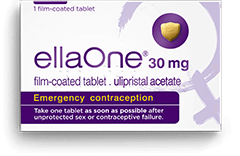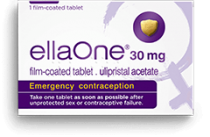Does the idea of having a cervical screening (otherwise known as a cervical smear or pap smear) make you uncomfortable?
We understand that the idea of taking off your underwear and having a stranger stare into the depth of your cervix doesn’t sound like a great Tuesday afternoon, but smear tests can and do save lives so it’s really important that you get checked out.
A recent survey of 2000 young women by Jo’s Cervical Cancer Trust found that 915 respondents had either delayed going for a cervical smear or had never gone at all. This is partly due to feeling awkward, uncomfortable or embarrassed.
Read on to find out more about HPV, learn why you should get tested and discover what really happens during a cervical screening.
What Is HPV?
Human papillomavirus (HPV) is an extremely common virus which infects your skin and can be passed on through skin-to-skin contact. There are over 100 different strains of the HPV virus and they can have different effects.
HPV is responsible for warts and verrucas which typically appear on the hands, knees and feet. Certain strains of HPV are also responsible for genital warts.
The virus can be passed on through skin-to-skin contact, which is why it is often transmitted through sex.
Eight out of ten sexually active people will have HPV at some point in their lifetime. This might sound scary, but in the vast majority of cases the HPV infection will clear up without you even knowing it’s there.
Is HPV Dangerous?
In the vast majority of cases, your body will fight off the HPV virus without you even noticing. Sometimes, however, the virus causes the cells in the cervix to change and become abnormal.
If these abnormalities are not caught in time, they could become cancerous.
The HPV strains which cause warts are not the same ones that affect your cervical cells, so having genital warts does not mean that you’re more likely to get cervical cancer.
Why Should I Get A Cervical Screening?
Cervical scans can prevent 75% of cervical cancers, and can help you catch it in the early stages, so it is really important that you get yourself checked every three years.
You should start getting letters from your GP from the age of 25 which will tell you how to book your screening.
What Happens At A Cervical Screening In The U.K?
When you arrive for your appointment, you will be taken into a room and your nurse will explain what’s going to happen and ask you if you have any questions.
You will then have some privacy – normally via a curtain – to remove your clothing from the waist down. You will get a paper sheet to cover your privates.
Then you will lie down on an examination bed, usually on your back with your legs bent and your knees apart.
The nurse will then put a clean speculum- a plastic cylinder with a round end – into your vagina, which will help the nurse gently open it so they can see into your cervix.
Finally, the nurse will use a soft, small brush to take a few cell samples from your cervix. The whole procedure should only last a few minutes.
What’s It Like To Get A Cervical Screening?
It’s all very well reading a factual account of what happens during a cervical smear, but how does it feel to actually get one? We spoke to Stevie Martin, a journalist who wrote about her own smear test, to find out.
“They put a speculum up you, which is sort of like a test tube. It’s not as big as people make out and it’s lubricated so it doesn’t hurt,” says Stevie Martin.
“A lot of people struggle because they don’t relax and their vaginal muscles clamp down, so I did a lot of deep breathing and made sure I was chilled out down there. Then they brush a bit of your cervix, which again you barely feel,” she continues
Is Stevie glad she got her smear test? “I was worried about getting my smear because I’d heard a lot of horror stories about it,” she says, “I cried in the waiting room and hyped it up so much, but when it happened it was absolutely fine.”
What Happens If My Smear Test Results Are Abnormal?
If your cervical scan finds some abnormal cells, you may be referred for a colposcopy. This is NOT the same as a colonoscopy, so don’t panic.
Can Condoms Protect You From HPV?
Using condoms can lower your risk of catching HPV, but it cannot guarantee that you won’t come into contact with the virus. We spoke to Jo’s Trust to find out more.
“HPV is passed on through skin-to-skin contact,” says a spokesperson for Jo’s Trust, “for genital HPV, this includes vaginal, oral and anal sex; touching in the genital area and sharing sex toys.”
“Condoms help to reduce the risk of being infected with HPV but they do not completely get rid of the risk, as condoms only cover part of the genitals.”
Do I Need A Cervical Scan If I Had The HPV Vaccine?
The HPV vaccine, which is available on the NHS for girls aged 11 to 17, can prevent the most common forms of high-risk HPV.
It does not protect against all strains of high-risk HPV, however, so you should attend a cervical smear from the age of 25.
For more information on cervical screenings, visit Jo’s Trust.
Don’t let fear, shame or embarrassment put you off going for a cervical scan: over half the population has a cervix and it’s important to know what’s going on with it.
You shouldn’t let feelings like these put you off doing anything for your wellbeing. This includes feeling too embarrassed or ashamed to seek emergency contraception.
The #MyMorningAfter campaign is trying to end the stigma that surrounds emergency contraception and we need your help! If you feel comfortable doing so, share your experience and help us change the narrative.
ellaOne® 30mg film-coated tablet contains ulipristal acetate and is indicated for emergency contraception within 120 hours (5 days) of unprotected sex or contraceptive failure. Always read the label.









